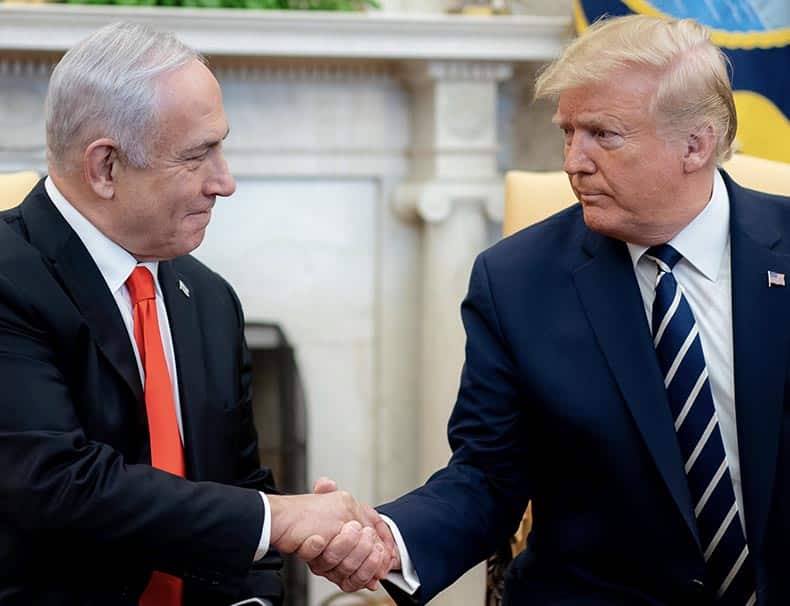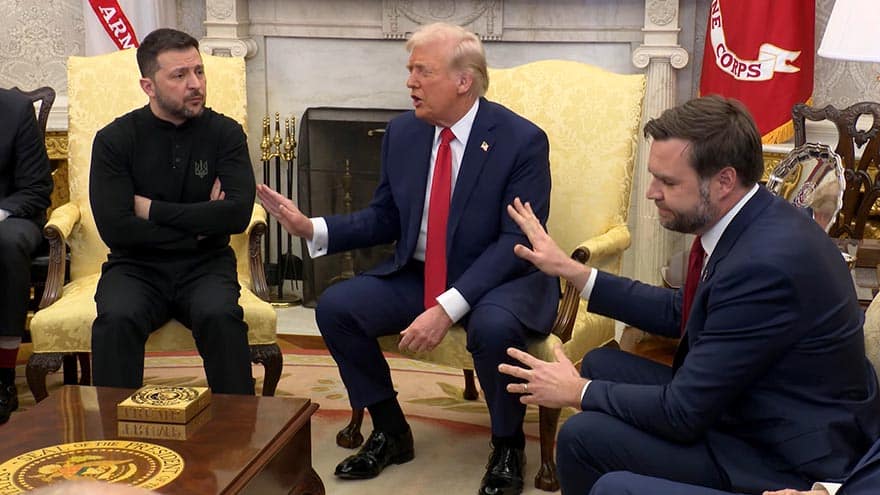The ongoing debate in the U.S. about whether the administration should cooperate with Israel in the military strike against Iran sparked deep divisions among political factions within the American right, especially among supporters of President Donald Trump.
“We don’t need more wars in the Middle East, we need to focus on rebuilding America,” said Steve Bannon, Trump’s former advisor. He called Prime Minister Benjamin Netanyahu “arrogant” after Netanyahu remarked that he supports “America first but not America dead” (mirroring Iran’s slogan “Death to America”). According to Bannon, “Netanyahu is in no position to lecture us on what’s good for America.”
In contrast, Senator Ted Cruz declared, “Israel is a critical ally against Islamic terror, and we must act together against Iran.” Senator Tom Cotton reinforced this by adding, “The Iranian threat is real, and Israel is the key to defending U.S. and Western security.”
Trump himself clarified that he alone defined what “America First” means: “Well, considering I’m the one who developed ‘America First,’ and given that the term wasn’t used until I came along, I think I get to define it. To all those wonderful people who say they want peace, you can’t have peace if Iran has a nuclear weapon. So, to everyone who doesn’t want to do anything about Iran getting a nuclear bomb—that’s not peace, and that’s not ‘America First.’ I promised before the election that Iran would not go nuclear, and that’s what I intend to make happen. Israel is not dragging me into war; I am the one who wants to prevent Iran from getting the bomb.”
However, not everyone in the MAGA movement (Make America Great Again), coined by Trump, shares the president’s view. Tucker Carlson, a prominent media figure who has recently voiced borderline antisemitic, anti-Israel remarks, strongly opposed American involvement in the attack, arguing, “We don’t need to die for Israel. That’s not what ‘America First’ means.” Carlson told his followers that U.S. support for what he described as Israeli aggression against Iran contradicts the political movement’s principles. He continued by tagging other conservative media figures and major Republican donors as “warmongers” for backing possible U.S. involvement in strikes on Iran.
“Washington knew these attacks were coming,” Carlson wrote. “It helped Israel carry them out. Politicians who claim to support ‘America First’ can no longer credibly say they had nothing to do with it. Our country is in a deep crisis. What happens from here will define Donald Trump’s presidency.”
Trump claimed Carlson called to apologize, but clarified he still left the door open for a diplomatic solution with Iran. “Iran cannot have a nuclear bomb, plain and simple, regardless of Israel,” the president said.
Polls also show mixed views: in a CNN poll, a vast majority of Republicans opposed a nuclear Iran (80%), and 70% supported U.S. participation in an attack. Conversely, a YOUGOV poll showed the opposite, finding most Trump voters opposed joining a war with Iran.
Ultimately, the U.S.’s decision to join the attack on Iran—and its involvement in actions before and after the campaign—demonstrates that the discourse portraying Israel as a beggar waiting at America’s door for aid is fundamentally flawed. In reality, Israel’s existence and military strength are cornerstones of America’s national interest.
The strategic partnership between the two countries reflects a mutual commitment to confronting global threats, with Israel serving as a critical testing ground for technologies later adopted by the U.S. military. This influence strengthens America’s standing as a global leader, as Israeli contributions provide a roadmap for innovative defense strategies. The ongoing dialogue between decision-makers, as evident in recent congressional discussions, reflects a growing recognition of the multidimensional value of this alliance, whose importance extends across economic, diplomatic, and moral domains.
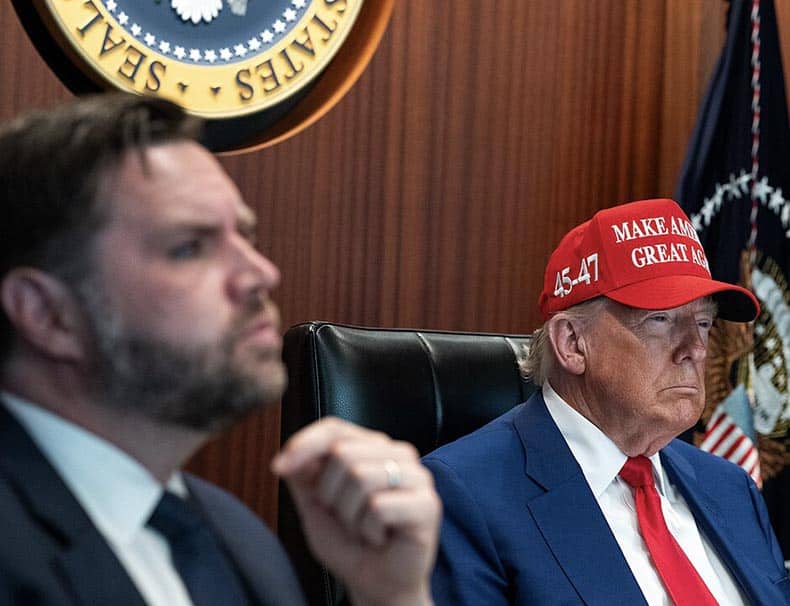
Roots of the Alliance: Technological Cooperation
During the Six-Day War, the Americans became Israel’s leading arms supplier, laying the foundation for a deep and longstanding strategic partnership. Over time, the relationship evolved into a multifaceted alliance, supported by an annual military aid package of $3.8 billion, 74% of which must be spent on U.S.-made military equipment, including F-35 fighter jets, M1 Abrams tanks, and Patriot missile systems. This requirement ensures that a significant portion of the funds returns to the American economy, supporting defense contractors like Lockheed Martin and Raytheon, which employ tens of thousands of workers in states such as Texas and California.
Joint development initiatives have yielded groundbreaking technologies that benefit both countries. The Arrow missile defense system, developed by Israel Aerospace Industries in cooperation with Boeing, was designed to intercept ballistic missiles, with about half of the project’s funding—over $2 billion to date—provided by the U.S. This investment spurred production at American facilities, especially in Alabama, where key components are manufactured, and led to the system’s integration into U.S. defense networks in the Persian Gulf. The Arrow’s success in joint tests, with an interception rate of over 90%, won praise from former Defense Secretary Robert Gates, who said in 2010, “The Arrow demonstrates how cooperation enhances our security and that of our allies.”
The Iron Dome system, developed by Rafael and Israel Aerospace Industries, has proven effective against short-range rockets from Hamas and Hezbollah, intercepting over 10,000 since its deployment. The U.S. has contributed $1.6 billion to its development since 2011, with additional funding for deployments at American bases in the Middle East. The system relies on American-made Raytheon radar components, creating steady demand that supports American manufacturing jobs. General Martin Dempsey, former Chairman of the Joint Chiefs of Staff, praised Iron Dome as an “engineering marvel changing the rules of defense on the battlefield,” highlighting its role in reducing the need for troop deployments during conflicts.
On the battlefield, the active protection system Trophy, also developed by Rafael, equips Abrams tanks with real-time defense against anti-tank missiles, leveraging Israel’s extensive combat experience. The U.S. has invested half a billion dollars to equip over a thousand tanks, with production involving American subcontractors. This system has reduced tank losses by 80% in conflict zones, resulting in significant savings on replacement costs. As General David Petraeus noted, “Trophy is a lifesaving Israeli technology protecting our soldiers.”
Additionally, precision munitions like the Spike missile (6,000 units) and the Popeye missile (500 units) enhance special forces operations and strategic U.S. strikes, incorporating components supplied by American firms. This economic cycle amplifies the impact of aid and promotes a resilient hybrid defense system.
The partnership also includes advanced training programs in which American and Israeli forces conduct joint exercises using F-16s equipped with Israeli navigation systems, improving tactical coordination. These annual programs at U.S. bases involve hundreds of personnel and lead to the adoption of Israeli rapid-response strategies by American pilots. Such interactions enable American engineers to gain insights from Israel’s rapid development processes, as highlighted at the 2024 defense industry conference. The aid fosters technological advancement, aligning with U.S. goals to maintain a competitive edge in global defense markets.
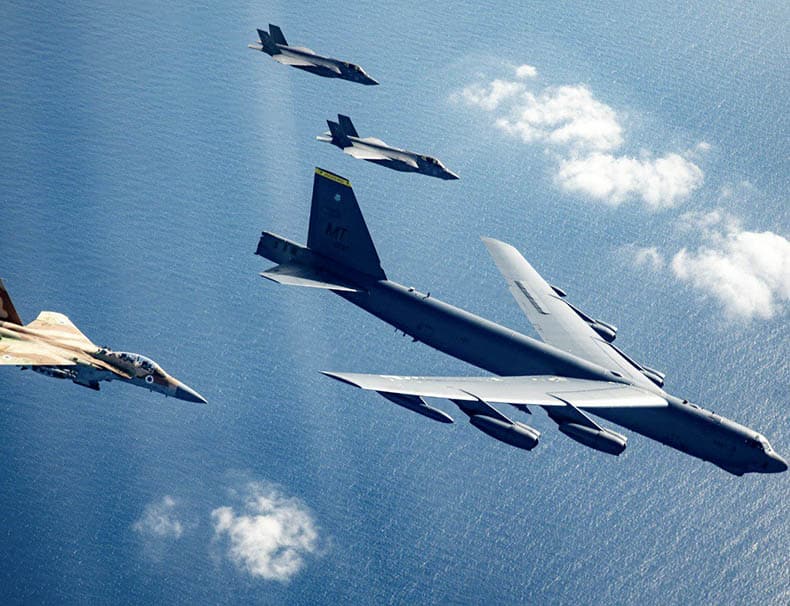
The Cyber Front: Israeli Innovation as America’s Shield
Israel’s role in America’s cybersecurity has become especially vital as digital threats from Iran, China, and Russia grow more sophisticated. The IDF’s Unit 8200—a world leader in digital intelligence and cyber warfare—collaborates with the U.S. National Security Agency (NSA) to develop AI-based tools for real-time threat detection. Joint investments of tens of millions of dollars annually support the exchange of advanced techniques, such as malware analysis, which has thwarted Iranian attempts to infiltrate American financial systems, as reported by the U.S. Department of Defense in 2024.
Stuxnet, deployed in 2010 and targeting Iran’s Natanz nuclear facility, stands as a key achievement of this collaboration. This cyber weapon exploited vulnerabilities to disrupt centrifuges and slow Iran’s nuclear program without physical confrontation, leveraging significant U.S. resources. The effort included American tech companies creating 5,000 jobs in the U.S. General Mark Milley, former Chairman of the Joint Chiefs of Staff, noted in 2022 that “Israeli cyber technology gives us a critical edge against global threats,” highlighting its enduring relevance.
Meanwhile, Israeli companies like Check Point and CyberArk, founded by Unit 8200 alums, are developing AI-based security solutions, including behavioral anomaly detection and automated response systems, which protect critical American infrastructure such as power grids and military communications networks. Contracts with these companies have exceeded $5 billion over the past decade, involving American partners such as Cisco for integration, and have created thousands of jobs. Notably, in 2024, Check Point prevented a ransomware attack on a central American bank, resulting in a $200 million savings, according to a company press release.
Joint exercises with U.S. Cyber Command, costing $100 million annually, simulate scenarios such as Iranian DDoS attacks on energy networks that utilize American infrastructure, including Utah data centers. These exercises led to the development of a new encryption protocol, which was successfully tested in 2024, thereby enhancing the defense posture of both nations. Offensive capabilities, including tools for disrupting enemy satellite communications, are being developed in conjunction with American companies such as Palantir, thereby reinforcing the alliance’s offensive posture.
Peter Roberts, a senior fellow at the Royal United Services Institute, remarked in 2021 that “Unit 8200 rivals the NSA in technological intelligence.” This cooperation, facilitated by aid, positions the U.S. at the forefront of cyber warfare.
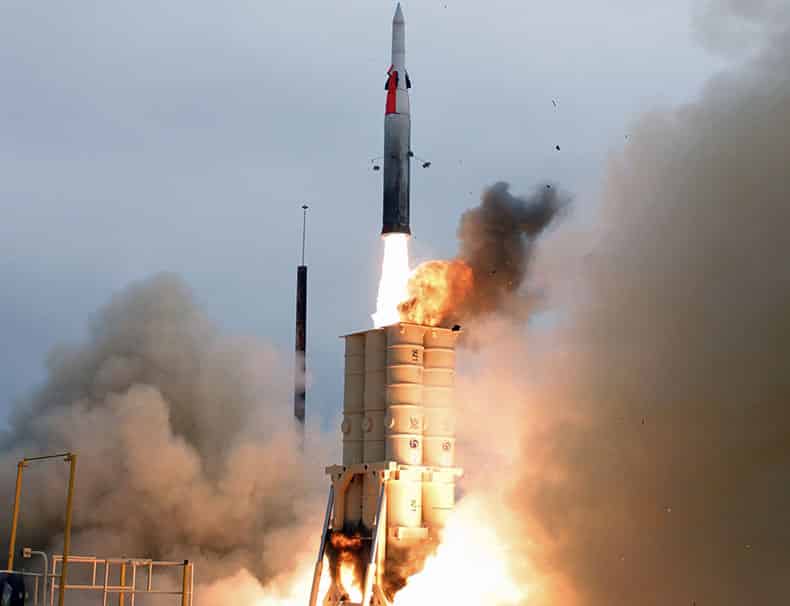
Trump’s Golden Dome: Israeli Model, Global Implementation
The unveiling of Donald Trump’s “Golden Dome” as a space-based defense system marks a significant evolution of Israel’s Iron Dome, inspired by its proven success. The Golden Dome was announced in the president’s speech last May, when he stated: “I saw how Iron Dome saved lives in Israel, and I want America to have a golden shield above us.” The Golden Dome envisions a network of thousands of satellites equipped to intercept ballistic and hypersonic missiles before atmospheric entry, extending to continental coverage. This initiative builds on the Israeli model, adapting it to American threats from Iran and North Korea, representing a technological leap forward.
The Golden Dome’s technological framework is based on Iron Dome achievements, but has been expanded for global use. While Israel’s defense system utilizes advanced radar and Rafael’s Tamir interceptors, which have a 90% success rate against short-range rockets, the Golden Dome integrates AI-based sensors and autonomous satellites to intercept missiles mid-trajectory. SpaceX, led by Elon Musk, is developing a “Jackal” prototype satellite capable of launching interceptors, inspired by Israel’s Arrow 3 exo-atmospheric interception design. The system also explores lightweight materials to ensure the satellite’s durability.
Iron Dome batteries, each costing an estimated $50 million, were developed within two years; however, five years passed between the project announcement and operational readiness. In contrast, the Golden Dome project—comprising a network of approximately 16,000 satellites with an initial estimated cost of $25 billion, as reported by the Pentagon in 2025—is significantly more complex, with an uncertain development timeline that could extend over many years. The system incorporates laser technology inspired by Israel’s “Iron Beam” trials, which successfully intercepted a drone in 2022 for under $1,000 per shot. However, space-based lasers face far greater technological challenges—mainly in cooling and energy—which lead to substantially higher costs. As a result, collaboration with Lockheed Martin is focusing on developing hydrogen fuel cells to overcome engineering hurdles and power the laser at the required intensity in space conditions.
Trump’s vision includes international cooperation, with Canada and Japan also expressing interest in the system. Canadian Prime Minister Mark Carney declared, “This is an opportunity to protect our continent from Russian threats,” while Japan seeks defense against North Korean missiles. Rafael, the developer of Iron Dome, may provide targeting algorithms, but Trump demands U.S.-only manufacturing. With an estimated budget of $175 billion over a decade—far exceeding the $1.6 billion investment in Iron Dome—the Golden Dome could transform global defense, blending Israeli innovation with American ambition.
Regional Stability: Israel as a Shield Against Iran
Israel’s strategic role against Iran is reinforced by its advanced defense systems, which support U.S. efforts to contain Tehran’s regional ambitions. With 30–40% of advanced U.S. weapons incorporating Israeli technology—from fighter jets to naval vessels and submarines—Israel counters Iran’s ballistic missile program and threats from its proxies, such as Hamas and Hezbollah. General Michael Hayden, former CIA director, stated in a 2024 CNN interview that “Israel’s human intelligence on Iran is unique and exclusive.”
Economically, the deployment of Iron Dome has saved $10 billion in potential military costs, according to a RAND Corporation study. For Israel, the annual $3.8 billion U.S. aid package funds equipment, joint training, and technological development. The U.S. gains a significant economic return, with 74% of aid invested in American-made products, creating a ripple effect. The F-35 program supports 15,000 jobs in Texas and California, with each aircraft costing $78 million, according to 2023 Lockheed Martin data. Annual Patriot missile purchases from Raytheon, totaling $1 billion, finance advanced defense research, while the Trophy system, installed on 1,000 M1 Abrams tanks for $500 million, reduces casualties by 80% and saves billions.
Israel also contributes to long-term technological progress, with access to U.S. markets enabling Rafael to develop the Spike missile, which American special forces have used ten times since 2022. This cooperation involves American engineers working alongside Israeli teams to produce a new counter-drone jamming system, which was successfully tested in 2024. The alliance also drives economic growth, with Israeli startups attracting $5 billion in American venture capital in 2023, thereby strengthening Silicon Valley. A senior Pentagon official noted in 2025: “This synergy fuels military and commercial innovation.”
Tensions with Iran heighten these advantages, as potential joint operations using Israeli technology reduce risks for the U.S. “A technology-based approach can deter Iran without boots on the ground,” explains Cruz. The key lies in combining systems like the successors to Iron Dome, ensuring an effective and low-cost defense. This mutual reinforcement enhances America’s global leadership, with Israel’s role as a testing ground for laser defenses serving as a model for future projects.

Shared Values: When the Old Testament Meets the New Covenant
The alliance between the U.S. and Israel rests on shared Judeo-Christian values, rooted in the Bible’s profound influence on the worldview of America’s founders. A key phrase in this context is “a city upon a hill,” a phrase used by 17th-century Puritan settlers led by John Winthrop to describe their vision for a moral society and an example to the world. This phrase, with origins in both the Old and New Testaments, continues to resonate in modern U.S.-Israel relations, as both nations see themselves as countries with a unique moral and democratic mission. The following lines will elaborate on Winthrop’s role, the meaning of the phrase, its historical context, and its relevance to the American-Israeli alliance.
Winthrop (1588–1649) was an English Puritan leader and lawyer, elected governor of the Massachusetts Bay Colony in 1630. As a central figure among the Puritan settlers, he shaped the new colony’s religious and social vision. The Puritans, a reformist stream within Protestant Christianity, sought to create a society that was pure in faith and morals, serving as a model for the Christian world. In his famous sermon “A Model of Christian Charity” (1630), delivered aboard the ship Arbella en route to the New World, Winthrop used the phrase “a city upon a hill” to describe his vision for Massachusetts. The phrase was drawn from Jesus’ words in the Sermon on the Mount, as recorded in the New Testament (Matthew 5:14): “You are the light of the world. A city that is set on a hill cannot be hidden.”
This phrase describes a community whose elevated position—physical or metaphorical—makes it visible to the public, thereby imposing a responsibility to serve as a moral example. Winthrop used it to stress that the new colony would be under constant scrutiny by the world and must maintain a just and ethical society to fulfill its covenant with God. In the Puritan context, the colony was viewed as a parallel to the biblical people of Israel, who entered into a covenant with God in Exodus 19 and Deuteronomy 26, thereby committing themselves to live according to divine laws.
Though the phrase “a city upon a hill” appears in the New Testament, the Puritans’ interpretation drew inspiration from the Old Testament (Hebrew Bible). The Puritans saw themselves as the “New Israel,” a people chosen to fulfill a role similar to that of biblical Israel—to be “a light to the nations” (Isaiah 42:6). The idea of a community serving as a moral example parallels the biblical perception of Jerusalem as a spiritual center, as described in Psalms 48:2: “Beautiful in elevation, the joy of the whole earth, Mount Zion.” The Puritans combined this concept with biblical laws, such as the commandments for social justice and personal liberty found in Deuteronomy 16:20 and Leviticus 25:10.
Winthrop’s use of “a city upon a hill” thus reflects a synthesis of Judeo-Christian traditions. While the literal source is the New Testament, the ideological context relies on the Hebrew Bible, which provided the Puritans with a model of a society bound by a covenant with God. This link between the Old and New Testaments created a deep ideological foundation that continues to influence U.S.-Israel relations.
The phrase “a city upon a hill” became a symbol of the American vision for moral and democratic leadership in the world. In the context of the U.S.-Israel alliance, it reflects the perception of both countries as having a special mission—to defend democratic and moral values in a hostile environment. The U.S., as a global power, sees itself as a beacon of freedom and democracy, continuing Winthrop’s vision of a society that serves as an example to the world. Israel, as the only democracy in the Middle East, embodies a similar role, maintaining liberal values in contrast to autocratic regimes like Iran, Syria, and Saudi Arabia.
The idea of a “city upon a hill” continues to appear in American political discourse, such as in President John F. Kennedy’s 1961 speech, in which he asked: “Can we meet the expectations of a ‘city upon a hill’?” Kennedy used the phrase to emphasize America’s commitment to lead the world through democratic and moral values, and his question reflects the heavy responsibility on a nation perceived as a “city upon a hill”—to serve as a positive example while enduring international scrutiny. In the Israeli context, this concept is reflected in the country’s commitment to uphold democracy and human rights, even while facing security and political challenges.
John Adams: Support for the Jews and Connection to Biblical Values
Thomas Jefferson and John Adams, two of America’s Founding Fathers, played central roles in shaping the ideology of the young nation. Their writings and ideas on Jewish values, religious freedom, and the connection to the Land of Israel reflect the profound influence of these concepts on the ideological alliance.
Jefferson (1743–1826), the third president and author of the Declaration of Independence (1776), was a key figure in crafting the principles of American liberty and democracy. As a philosopher and avid student of religion and ethics, he studied the Bible in depth, especially the moral teachings of Judaism and Christianity. In 1804, he created the “Jefferson Bible” (The Life and Morals of Jesus of Nazareth), in which he extracted passages from the New Testament emphasizing moral principles such as justice, compassion, and humanity, while omitting supernatural theological elements. This work reflects his rational approach to religion, valuing Judeo-Christian morality as a foundation for a just society.
In a letter to Adams dated October 13, 1813, Jefferson wrote: “The Jewish moral system is the best the world has ever seen.” This quote illustrates the third president’s profound appreciation for the moral principles of Judaism, which he regarded as a universal foundation for social justice. This influence is also evident in his support for religious freedom, as expressed in the Virginia Statute for Religious Freedom (1786), where he wrote: “No man shall be compelled to frequent or support any religious worship… nor shall otherwise suffer on account of his religious opinions.”
This law, considered one of Jefferson’s most significant contributions to American democracy, emphasized each person’s right to believe and practice their faith without government coercion. He saw religious freedom as a fundamental value aligned with the Jewish concept of personal liberty, as found in the Bible, for example in the command to free enslaved people during the Jubilee Year (Leviticus 25:10). These principles of liberty and justice became central pillars of American ideology and influenced the strong bond with Israel, which embodies liberal democracy in the Middle East.
Adams (1735–1826), the second president, was also a key figure in shaping American ideology. As one of the authors of the Declaration of Independence and a signer of the U.S. Constitution, he was a staunch advocate of liberty, democracy, and national independence. In a letter to Mordecai Manuel Noah, a prominent Jewish figure in New York, dated 1818, Adams wrote: “I wish the Jews again in Judea an independent nation, as glorious as in ancient times.”
This quote reflects Adams’s early support for Zionism, which predated the modern Zionist movement by several centuries. He saw the return of the Jews to the Land of Israel not only as the fulfillment of biblical prophecies but also as an expression of the values of liberty and nationalism at the heart of American ideology. Adams’s connection to Judaism was based on his understanding of the Bible as a source of democratic and liberal values, and he viewed the Jews as a people with a historical and moral right to return to their homeland.
The letter to Mordecai Manuel Noah was written at a time when Jews in America still faced discrimination and inequality. Adams’ support for their return to the Land of Israel was not merely theological but also political, reflecting his belief that national freedom is a universal right. His words laid an early foundation for American support of Zionism, which would become a key component of U.S.-Israel relations in the 20th century.
The support of Jefferson and Adams for Jewish principles and religious freedom laid the groundwork for modern American support for the State of Israel. Their early statements of appreciation for Jewish morality and the Jewish right to a homeland reflect the close connection between American ideology and Zionism. In the 20th century, this support materialized in the U.S. recognition of the State of Israel in 1948 and the strategic alliance that has strengthened over the years across the various domains discussed. As demonstrated at the height of Operation “Am KeLavi,” this alliance also produced historic military cooperation aimed at eliminating the greatest threat to the free world—the nuclear program of Iran’s ayatollah regime.
